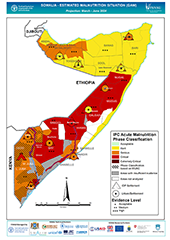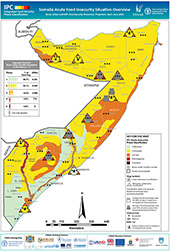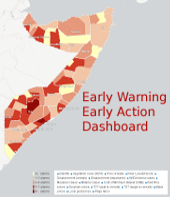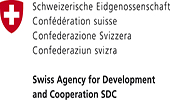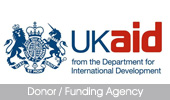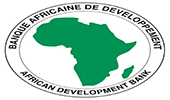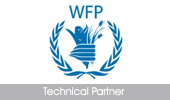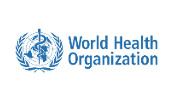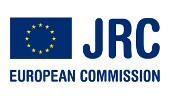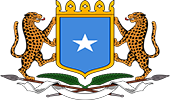Sectoral Analysis / Agriculture
Agriculture
Issued: 18 June 2010
Crop Conditions and Activities
The current Gu season is distinguished with increased planting attributable to multiple factors such as the early start of the rains; high cereal prices; increased engagement in farming by the displaced population; and reduced supply of food aid in the area. Favourable rains received in most parts of the South contributed to good crop performances enabling crops to germinate and establish normally. Currently, the established crops are at different stages (from 1st weeding to milking stage) because of different planting times. Green maize is expected to be ready in late May or early June, with the main maize harvest occurring largely in July. The continuation of rains into June will be critical for the growth of crops at the milking stage. However, currently overall Gu 2010 crop production prospects look favourable.
In some areas of Bay and Gedo regions, crop germination and establishment was undermined by an outbreak of crickets and grasshoppers respectively, due to favourable ambient temperature and humidity during the onset of Gu rains. In addition, a few incidences of pest (white grubs, termites and stalk-borers) attacks on crop seedlings were also reported in most crop-producing regions (Shabelle regions, Juba regions, Gedo, Bay, Northwest and the Cowpea Belt of Central). However, initial field reports indicate that sorghum production is expected to be average to above average in sorghum growing districts of Bay, Bakool, Gedo, Shabelle and Juba regions. Similarly, maize production is likely to be average in the main maize producing regions of Lower and Middle Shabelle, as well as in Gedo region. Conversely, Gu ceral production is expected to be below normal in Juba and Hiran due to significant crop damage caused by the floods in early May as well as below normal rainfall in agropastoral and riverine livelihoods of Hiran. The crops that were damaged by the floods in southern Somalia were at different growth stages - from milking to second weeding. Although the impact of the floods has not yet been fully assessed, the rough estimates of the scope of the damage are as follows: 15,000 – 20,000ha in Middle Juba, 10,000 – 15,000ha in Lower Juba (Jammame), 3,000 – 4,000ha in Hiran, 3,000 – 4,000ha in Middle Shabelle and 200 – 300ha in Lower Shabelle. In the medium term, the effects of damage brought about by flooding in Shabelle and Juba Valleys will be cushioned by increased opportunities for recessional cultivation (off-season crops) in desheks over the next few months as well as increased fishing opportunities. However, in the short term, households in the flood-affected communities of Juba region are at risk of crisis. Reportedly, flood water has already receded in many areas, while Hagaa rains have started in Shabelle, coastal Juba and parts of Bay, improving standing crops in these regions.
Crop establishment and growth in agropastoral areas of Awdal, Togdheer and Galbeed regions in the Northwest is good due to the above normal Gu rains. Maize crops planted in March/April are currently at flowering and milking stage. Similar to southern regions, green maize is expected to be ready in early June and the main maize harvest will occur in July. In response to the good rains, farmers also planted sorghum, which is used in the area for both food and fodder. The sorghum harvest is expected in October/November 2010.
Local Cereal Prices and Terms of Trade
The local cereal prices (sorghum and maize) exhibited mixed trends since December last year. The prices of sorghum increased in the range of 15- 40% in most agropastoral markets of southern Somalia, with the exception of Bay region, where it has declined by 31% due to the bumper harvest last Deyr season. Similarly, maize prices have risen by 15-68% in most markets of southern Somalia with Buale (68%) and Afmadow (65%) showing the highest rate of increase (Figure 4). Compared to May last year, the increase in local cereal price are recorded in Central (sorghum - 40%), the Shabelle valley (maize - 35%) and Sorghum Belt (sorghum - 17%). These cereal price increases are in line with expected seasonal trends. However, the observed price increments can partly be attributed to such factors as low supply due to below average Deyr 2009/10 production in some regions (Shabelle, Hiran, Gedo), food aid suspension in the South and disruptions in market supply caused by insecurity in South and Central. Conversely, the local cereal prices have slightly dropped or remained stable in most main markets of northern Somalia.
The lowest maize prices in May 2010 were recorded in Lower Juba (Jammame - 5,973 SoSh/kg; Kismayo 7,000SoSh/kg) and Lower Shabelle (Qoryole 7,344 SoSh/kg). Conversely, the highest maize prices were noted in Afmadow and Hagar (14,000SoSh/kg) in Lower Juba due to the remoteness of these districts from the main producing areas and restricted trade movements caused by Gu rains as well as insecurity. The lowest sorghum price (4,475 SoSh/kg) in May was observed in Baidoa market due to significant supply from last harvest and intensified stock selling in this Gu season to cover the costs of land preparation and other farming activities. Gedo (Luuq - 10,000SoSh/kg; Bardera - 7,500SoSh/kg) as well as Bakool (Hudur - 7,500SoSh/kg) and Hiran (Beletweyne - 7,000SoSh/kg) regions exhibited the highest sorghum prices among the markets of the Sorghum Belt due to the several poor consecutive seasons of cereal production and likely the suspension of food aid distribution. However, compared to other regions of Somalia the highest price of sorghum was recorded in the North (Erigavo - 20,400 SoSh/kg; Lasanod - 20,250 SoSh/kg; Bossaso - 17,000SoSh/kg) and Central (Dhusamareb - 17,000SoSh/kg), due to transportation costs and volatile security situation affecting trade movements. The observed sorghum prices in the above mentioned markets of the North are very close to those of rice, which is traditionally consumed in these areas.
Improved labour opportunities, in view of the intense agricultural activities in the current Gu season as well as cash for work activities in Lower Shabelle implemented in the first half of 2010 (rehabilitation of canals in Qoryoley and Kurtunwarey in Lower Shabelle), contributed to increased labour wage rates in Shabelle and parts of Sorghum Belt regions. As a result, in most reference markets of Lower Shabelle, terms of trade (ToT) between maize and daily labour wage increased by 20-30% since December last year due to a significant increase (from 50,000SoSh/daily in Dec. ‘09 to 90,000SoSh/daily in May ‘10) in labour wage rate in the same period. The ToT between cereal and daily labour has also increased in Baidoa (44%) and Beletweyne (31%) in the last six months, but it has dropped in other markets of Shabelle (Merka - 50% and Jowhar - 14%) and Sorghum Belt (Bardera - 36%), mainly due to cereal price increases. The ToT decline (18-46%) was also observed in most main markets of Juba regions as a result of increased cereal prices and low wage rates caused by reduced farming labour opportunities in the riverine flood affected areas.
In absolute terms, the highest ToT in Shabelle regions is observed in Wanla Weyne (22kg of maize/ daily labour wage) and Qoryoley (12kg of maize/ daily labour wage) districts, while Jowhar (6kg/daily labour wage) exhibited the lowest ToT in the region, due to a significant maize price increase (41%) in the last six months. In Juba regions, the highest ToT is documented in Kismayo (20kg of maize/ daily labour wage) and Jammame (18kg of maize/ daily labour wage) and the lowest is recorded in Hagar and Afmadow (5-6kg of maize/ daily labour wage). In the Sorghum Belt, the highest ToT is noted in Baidoa and Beletweyne (15kg of sorghum/daily labour wage each), while the lowest was in Hudur market (5kg of sorghum/daily labour wage) due to the high sorghum prices and low daily labour wage rates. By zonal aggregates of the ToT between local cereals and labour wages, the lowest ToT in May 2010 was found in the Northeast (7 kg of sorghum/ daily labour wage).
